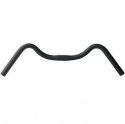paco1961
Zen MBB Master
Glad the new bars are working out. I have often wondered if a different bar configuration on the cBs would be an improvement. I’m using the stock set up on my S40 but have always wanted to experiment with 2 things;
1) narrower bar - not too much narrower as I’m sure it would make for an unwieldy beast. But maybe drop a couple of cm from each side to improve aero and quite frankly to make it easier to get up the basement stairs.
2) try a flatfish bar rather than the stock drop/flair set up. Moving the hands to a lower position and getting those big hoods out of the air flow would have to be a good thing.
It seems a shallow mustache shape would actually enhance leg clearance and allow for a lower hand position.
1) narrower bar - not too much narrower as I’m sure it would make for an unwieldy beast. But maybe drop a couple of cm from each side to improve aero and quite frankly to make it easier to get up the basement stairs.
2) try a flatfish bar rather than the stock drop/flair set up. Moving the hands to a lower position and getting those big hoods out of the air flow would have to be a good thing.
It seems a shallow mustache shape would actually enhance leg clearance and allow for a lower hand position.






